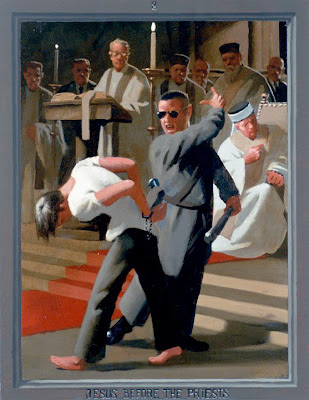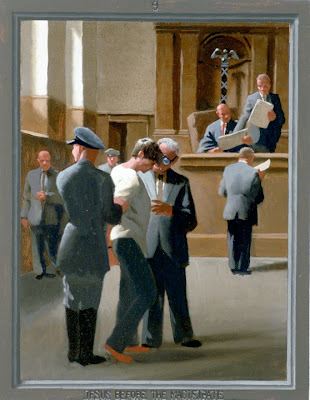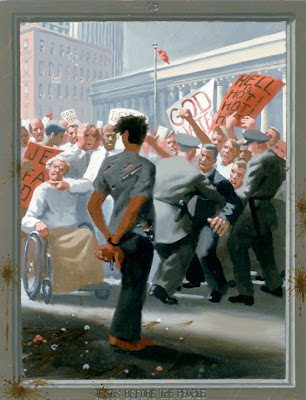As rainbow flags wave with LGBT Pride this month, the Rainbow Christ Prayer evolves and touches lives in exciting new ways.
People have adapted the prayer for a wide variety of settings, including a queer theology class in Dallas, a non-violence training in Pennsylvania, and a poetry reading in Los Angeles. It has been used as a blessing at Shabbat dinners, a meditation at yoga classes, and a wedding gift at a same-sex marriage. It has also been
denounced as blasphemy by the hate group Americans for Truth About Homosexuality.
The colors of the rainbow reveal the many faces of Christ in the Rainbow Christ Prayer, which was written by lesbian author Kittredge Cherry and gay theologian Patrick S. Cheng in 2012.
The prayer matches the seven colors of the rainbow flag with the seven models of the queer Christ from Patrick’s book “
From Sin to Amazing Grace: Discovering the Queer Christ. The rainbow is an important symbol in both the LGBT movement and the Judeo-Christian tradition, where it stands for God’s promise to support all life on earth.
Rainbow Christ Prayer cards and Crosses from Salem United Church of Christ
Small needlepoint rainbow crosses were handed out with a short version of the Rainbow Christ Prayer in 2013 when
Salem United Church of Christ in Columbia, Pennsylvania, hosted a training for the
Silent Witness Peacekeepers Alliance. The Alliance helps the LGBT community have safe, peaceful gatherings by providing a non-confrontational buffer between protestors at Pride festivals and other events. A member of the Salem church stitched the rainbow crosses specifically to go with the Rainbow Christ Prayer for volunteers at the training.
The mini prayer cards, measuring only two inches high, adapts the prayer with new opening lines: “Rainbow Christ; You embody all the colors of the world. Rainbows stretch in order to connect diverse realms: Inspire us to stretch beyond boundaries so that we may embody the wonders born from the diversity which You created.”
Haven group members read the Rainbow Christ Prayer at a poetry event in downtown Los Angeles in April. Adam Ackley is standing on the far right.
H. Adam Ackley, a queer theology professor and Church of the Brethren minister, has introduced the Rainbow Christ Prayer in many different settings.
“Reading the Rainbow Christ Prayer by yourself is so different from praying it aloud in a group led by seven readers who are diverse in race, age, orientation, and gender,” Ackley said. “Just looking at us praying together, you get the picture of radical inclusion. Our voices serve to flesh out the words.”
He entered into a deep relationship with the Rainbow Christ Prayer in 2013 after he was forced to leave his position at the evangelical Azusa Pacific University because he came out as a transgender man.
The rejection put Ackley on a path that led to the Rainbow Christ Prayer as searched for spiritual sustenance with the students at
Haven, APU’s unofficial LGBTQ student group.
“Other Christians won’t pray with us, which actually liberated us to explore non-evangelical prayer like your Rainbow Christ one,” Ackley told the Jesus in Love Blog.
The Haven group often prayed the Rainbow Christ Prayer together before dinner on Fridays or Saturdays as “Shabbat” prayer during informal monthly meetings at Ackley’s home.
“It really evolves from theological meditation to communal prayer as we pray it together over time,” Ackley explained. “And then in turn we shared publicly several times after months of ‘family’ prayer.”
They adapted and shared the Rainbow Christ Prayer at two big events in southern California this spring, each with different groups of about 300 people in attendance. The events were:
*
A poetry night on “Race/Sexuality” sponsored by
Art Share LA, a downtown sanctuary for the arts; and
LA Term, APU’s urban semester program. “People applauded after the Rainbow Christ Prayer and many said it was the most of one of most powerful experiences of the three-hour event,” Ackley said.
*
Art of Discovery, an evening of music, art, dance, poetry exploring the topics of gender identity and sexual orientation, with lesbian Episcopal priest Susan Russell, hosted by Haven.
Many in the audiences were new to the experience of praying words based in LGBTQ experience. Ackley reports that settings were “mostly heteronormative so this was mind-blowing to most. Progress / witness happened though.”
Ackley, a certified yoga instructor, is also incorporating the Rainbow Christ Prayer into chakra meditations when he teaches yoga classes.
In addition he also rewrote the prayer as a wedding gift for a gay couple this spring. He gave it to Integrity USA’s Mel Soriano and his partner Stephen Mulder, along with a rainbow candle holder, so they can use it for family prayer at home. His wedding version is
posted on his blog at Huffington Post.
Ackley’s adaptation is presented here with permission, followed by the original version. The adaptation is more oriented toward public prayer in mixed groups, while the original may be more suitable for LGBTQ settings or private meditations. Patrick and I are working on a revised version based on some of the ideas and feedback from others who have used the prayer.
Rainbow Christ Prayer (adapted by Ackley)
Rainbow Christ, You embody all the colors of the world that You created. Rainbows bridge Your different realms: East and west, heaven and earth, queer and non-queer. So inspire us to celebrate each color of Your rainbow together.
Lighting a red candle: The red of Your rainbow reminds us to LIVE FULLY a renewed Life rooted in Spirit. Living and Self-Loving Christ, nourish in us the grace of healthy well-being. Renew our bodies, our minds and our spirits so that we may follow the abundant inner light You give us. Thank You, God, for creating each of us just as we are.
Lighting an orange candle: The orange of Your rainbow reminds us to THANK You for the gift of creativity, including the fire of sacred human sexuality, sanctified by the Spirit. Christ, Word made Flesh, open and free us to receive from You relationships that are mutual means of grace. Help us to forgive the past and to embrace now all that is positive in this present moment, expression our passion and our desire in creative, healthy, grace-filled ways.
Lighting a yellow candle: God, the yellow of Your rainbow reminds us to REJOICE, even in the very gift of self, each of us made in God's own image. Christ, our core, Your Spirit empowers us, radiating in and through us. Grant us grace to value and trust ourselves and each other enough to "come out" continually from secrecy, shame, and self-rejection into Your light that illuminates and affirms Your image and love in each of us.
Lighting a green candle: God, the green of Your rainbow reminds us to LOVE, the very heart of Your Spirit. Transgressive Christ, You are our heart, braking into the perfect freedom that You alone give us through Your perfect love that casts out fear. Fill our hearts with untamed, compassionate love for all beings, including ourselves and each other, in every area of our lives, so that we give love and receive love with happiness, balance, grace, and harmony.
Lighting a blue candle: God, the blue of Your rainbow reminds us to GIVE VOICE to our selves, made in Your image, beloved by God, trusting that self-expression is the voice of Your Holy Spirit in, through and between us. Liberator Christ, You are our voice, speaking out with calm, confidence and power against all that oppresses Your creation. Grant us gracious, prophetic, active, and just voices to speak Your truth in love.
Lighting a purple candle: God, the violet of Your rainbow reminds us of the inner vision that seeks and knows Your highest Truth, which is LOVE, the deep intuitive wisdom of Your Holy Spirit. Interconnected and interconnecting Christ, You are our Wisdom, creating and sustaining us and Your universe. Grant us the grace of interdependence, freeing us from isolation. As all the colors of Your rainbow are connected and yet distinct, connect us with each other and with all of Your creation in ways that bring peace, wholeness, balance, and nurture of our spirits. Though the colors of Your rainbow are distinct, You bring them together to make one light. All-Encompassing Christ, our Crown, in this same way You unite humanity with God. So too unite us with each other, liberating us to accept from You interconnection as a gift of Your grace. Like the rainbow, may we too embody and reflect Your light, color, beauty and promise. AMEN.
***********
Rainbow Christ Prayer (original by Cherry and Cheng)
Rainbow Christ, you embody all the colors of the world. Rainbows serve as bridges between different realms: heaven and earth, east and west, queer and non-queer. Inspire us to remember the values expressed in the rainbow flag of the lesbian, gay, bisexual, transgender and queer community.
Red is for life, the root of spirit. Living and Self-Loving Christ, you are our Root. Free us from shame and grant us the grace of healthy pride so we can follow our own inner light. With the red stripe in the rainbow, we give thanks that God created us just the way we are.
Orange is for sexuality, the fire of spirit. Erotic Christ, you are our Fire, the Word made flesh. Free us from exploitation and grant us the grace of mutual relationships. With the orange stripe in the rainbow, kindle a fire of passion in us.
Yellow is for self-esteem, the core of spirit. Out Christ, you are our Core. Free us from closets of secrecy and give us the guts and grace to come out. With the yellow stripe in the rainbow, build our confidence.
Green is for love, the heart of spirit. Transgressive Outlaw Christ, you are our Heart, breaking rules out of love. In a world obsessed with purity, you touch the sick and eat with outcasts. Free us from conformity and grant us the grace of deviance. With the green stripe in the rainbow, fill our hearts with untamed compassion for all beings.
Blue is for self-expression, the voice of spirit. Liberator Christ, you are our Voice, speaking out against all forms of oppression. Free us from apathy and grant us the grace of activism. With the blue stripe in the rainbow, motivate us to call for justice.
Violet is for vision, the wisdom of spirit. Interconnected Christ, you are our Wisdom, creating and sustaining the universe. Free us from isolation and grant us the grace of interdependence. With the violet stripe in the rainbow, connect us with others and with the whole creation.
Rainbow colors come together to make one light, the crown of universal consciousness. Hybrid and All-Encompassing Christ, you are our Crown, both human and divine. Free us from rigid categories and grant us the grace of interwoven identities. With the rainbow, lead us beyond black-and-white thinking to experience the whole spectrum of life.
Rainbow Christ, you light up the world. You make rainbows as a promise to support all life on earth. In the rainbow space, we can see all the hidden connections between sexualities, genders and races. Like the rainbow, may we embody all the colors of the world! Amen.
![]()
I first got the idea for the Rainbow Christ Prayer as I reflected on Patrick Cheng’s models of the queer Christ. Patrick and I each spent years developing the ideas expressed in the Rainbow Christ Prayer. It incorporates rainbow symbolism from queer culture, from Christian tradition and from the Buddhist/Hindu concept of chakras, the seven colored energy centers of the human body. The prayer is ideal for use when lighting candles in a rainbow candle holder.
![]()
Kittredge Cherry with Rainbow Candles (photo by Audrey)
I first wrote about linking the colors of the rainbow flag to queer spirituality in my 2009 reflection on Bridge of Light, a winter holiday honoring LGBT culture. Meanwhile Patrick was working on his models of the queer Christ based on LGBT experience. In 2010 he presented five models of the queer Christ in his essay “
Rethinking Sin and Grace for LGBT People” at the Jesus in Love Blog (and as a chapter in the book “
Sexuality and the Sacred: Sources for Theological Reflection![]()
.”)
In a moment of inspiration I realized that Patrick’s various queer Christ models matched the colors of the rainbow flag. Patrick and I joined forces and the Rainbow Christ Prayer was born.
With wonderful synchronicity, Patrick had already added two more queer Christ models, so he now had seven models to match the seven principles from Bridge of Light. He wrote a detailed explanation of all seven models in his book “From Sin to Amazing Grace: Discovering the Queer Christ,” published in spring 2012 by Seabury Books.
For more on the history and meaning of the rainbow flag, see my Huffington Post article
Rainbow Christ Prayer honors LGBT spirituality.
Gay spirituality author
Joe Perez helped lay the groundwork for this prayer in 2004 when he founded the interfaith and omni-denominational winter ritual known as
Bridge of Light. People celebrate Bridge of Light by lighting candles, one for every color of the rainbow flag. Each color corresponds to a universal spiritual principle that is expressed in LGBT history and culture. I worked with Joe to revise the Bridge of Light guidelines based on my on own meditations on the chakras and their connections to the colors of the rainbow flag.
The symbolism of the rainbow resonates far beyond the LGBT flag. It plays an important role in the story of Noah’s Ark. After the flood, God places a rainbow in the sky, saying, “Never again will the waters become a flood to destroy all life. Whenever the rainbow appears in the clouds, I will see it and remember the everlasting covenant between God and all living creatures of every kind on the earth.” (Genesis 9:15-16). In the Book of Revelation, a rainbow encircles the throne of Christ in heaven.
___
Related links:
Rethinking Sin and Grace for LGBT People by Patrick Cheng (Jesus in Love)
Welcome the New Year with Bridge of Light by Kittredge Cherry (Jesus in Love)
Rainbow Christ Prayer at Believe Out Loud
Rainbow Christ Prayer article by Kittredge Cherry at
Huffington PostRainbow flag (Wikipedia)
Patrick Cheng's
website and
Twitter feed
____
This post is part of the
Queer Christ series series by Kittredge Cherry at the Jesus in Love Blog. The series gathers together visions of the queer Christ as presented by artists, writers, theologians and others.
Copyright © Kittredge Cherry. All rights reserved.http://www.jesusinlove.blogspot.com/Jesus in Love Blog on LGBT spirituality and the arts

 ” by Andrew Harvey. A comprehensive chapter titled “Christina Rossetti: The Female Queer Virgin” appears in “Same Sex Desire in Victorian Religious Culture
” by Andrew Harvey. A comprehensive chapter titled “Christina Rossetti: The Female Queer Virgin” appears in “Same Sex Desire in Victorian Religious Culture ” by Frederick S. Roden. Rossetti is also important to feminist scholars who reclaimed her in the 1980s and 1990s as they sought women’s voices hidden in the church’s patriarchal past.
” by Frederick S. Roden. Rossetti is also important to feminist scholars who reclaimed her in the 1980s and 1990s as they sought women’s voices hidden in the church’s patriarchal past.








 ,” recounts a series of 16 visions that she experienced from May 8-13, 1373 during a severe illness when she was 30 years old. The book includes Julian’s most famous saying, “All shall be well and all shall be well and all manner of things shall be well” -- words spoken to her by God in one of Julian’s visions.
,” recounts a series of 16 visions that she experienced from May 8-13, 1373 during a severe illness when she was 30 years old. The book includes Julian’s most famous saying, “All shall be well and all shall be well and all manner of things shall be well” -- words spoken to her by God in one of Julian’s visions. 
 and
and  . For longer quotations
. For longer quotations 










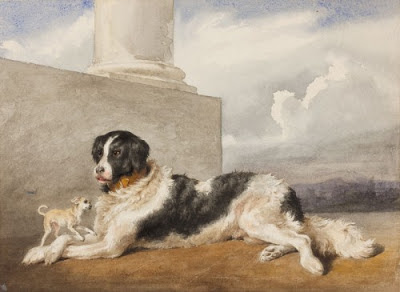
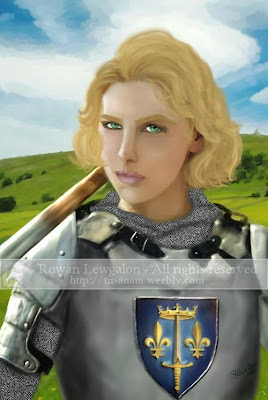


 ” is an underground classic with Joan as “a cross-dressing, teenaged, runaway lesbian” confronting male-dominated institutions. Feinberg has a chapter on Joan as “a brilliant transgender peasant teenager leading an army of laborers into battle” in her history book “
” is an underground classic with Joan as “a cross-dressing, teenaged, runaway lesbian” confronting male-dominated institutions. Feinberg has a chapter on Joan as “a brilliant transgender peasant teenager leading an army of laborers into battle” in her history book “ .”
.” 
 .” The primary source for this idea was the fact, documented in her trials, that Joan shared her bed with other girls and young women. She followed the medieval custom of lodging each night in a local home. Joan always slept with the hostess or the girls of the household instead of with the men.
.” The primary source for this idea was the fact, documented in her trials, that Joan shared her bed with other girls and young women. She followed the medieval custom of lodging each night in a local home. Joan always slept with the hostess or the girls of the household instead of with the men. 


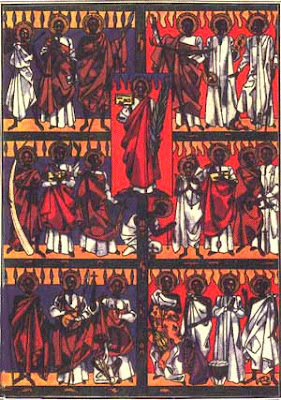













 .”)
.”)


 , historian Anne Firor Scott explains:
, historian Anne Firor Scott explains: by Nancy Ordover and
by Nancy Ordover and  by Lillian Faderman, and in the play “
by Lillian Faderman, and in the play “ , she said:
, she said: (1956), her memoir of growing up as a mixed-race person in the segregated South.
(1956), her memoir of growing up as a mixed-race person in the segregated South. 



 by Herbert A. Wisbey Jr. In recent years the life and work of the Friend has been examined by feminists and LGBTQ scholars, including gay historian Michael Bronski in his new Lambda Literary Award-winning book,
by Herbert A. Wisbey Jr. In recent years the life and work of the Friend has been examined by feminists and LGBTQ scholars, including gay historian Michael Bronski in his new Lambda Literary Award-winning book,  .
.